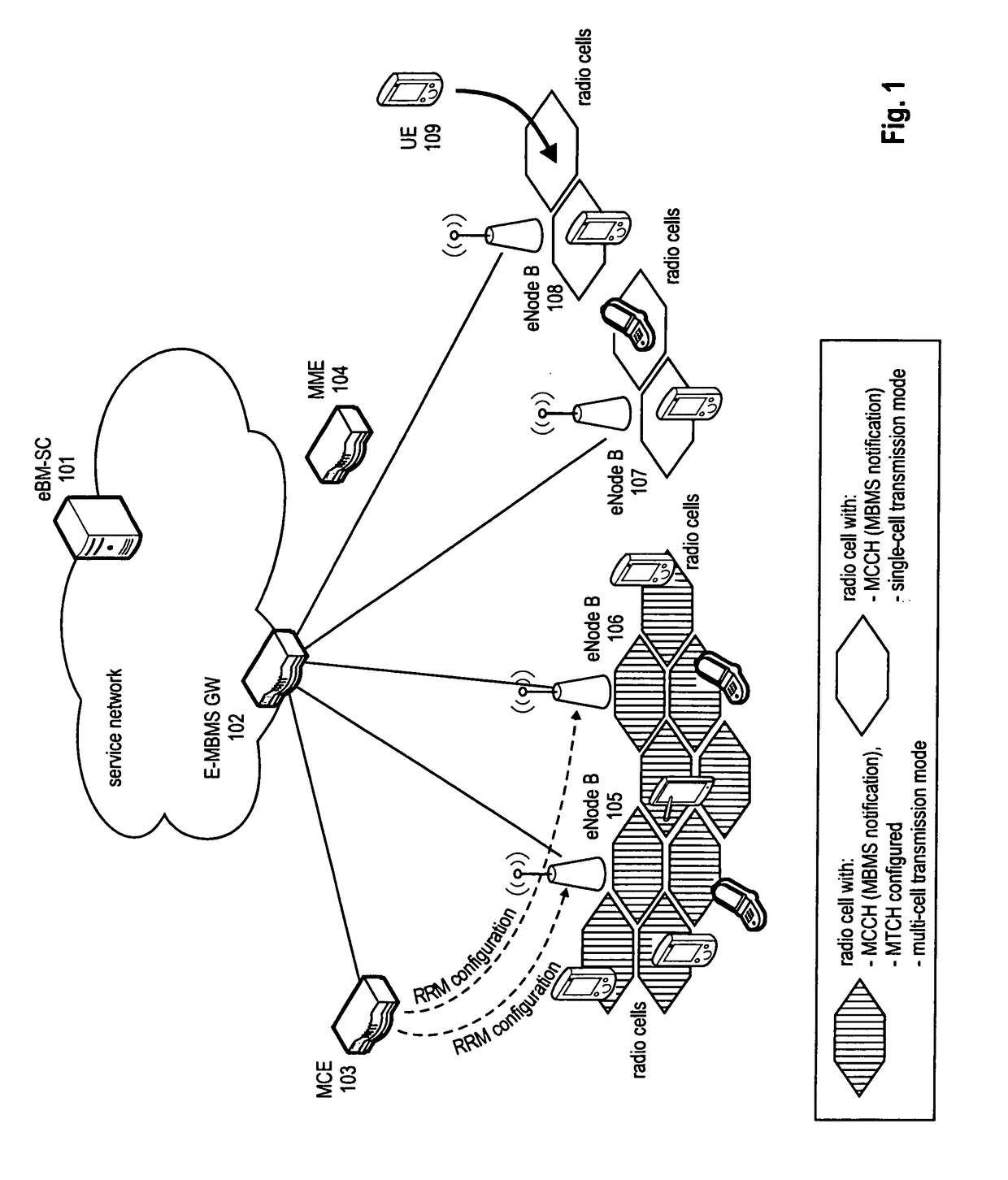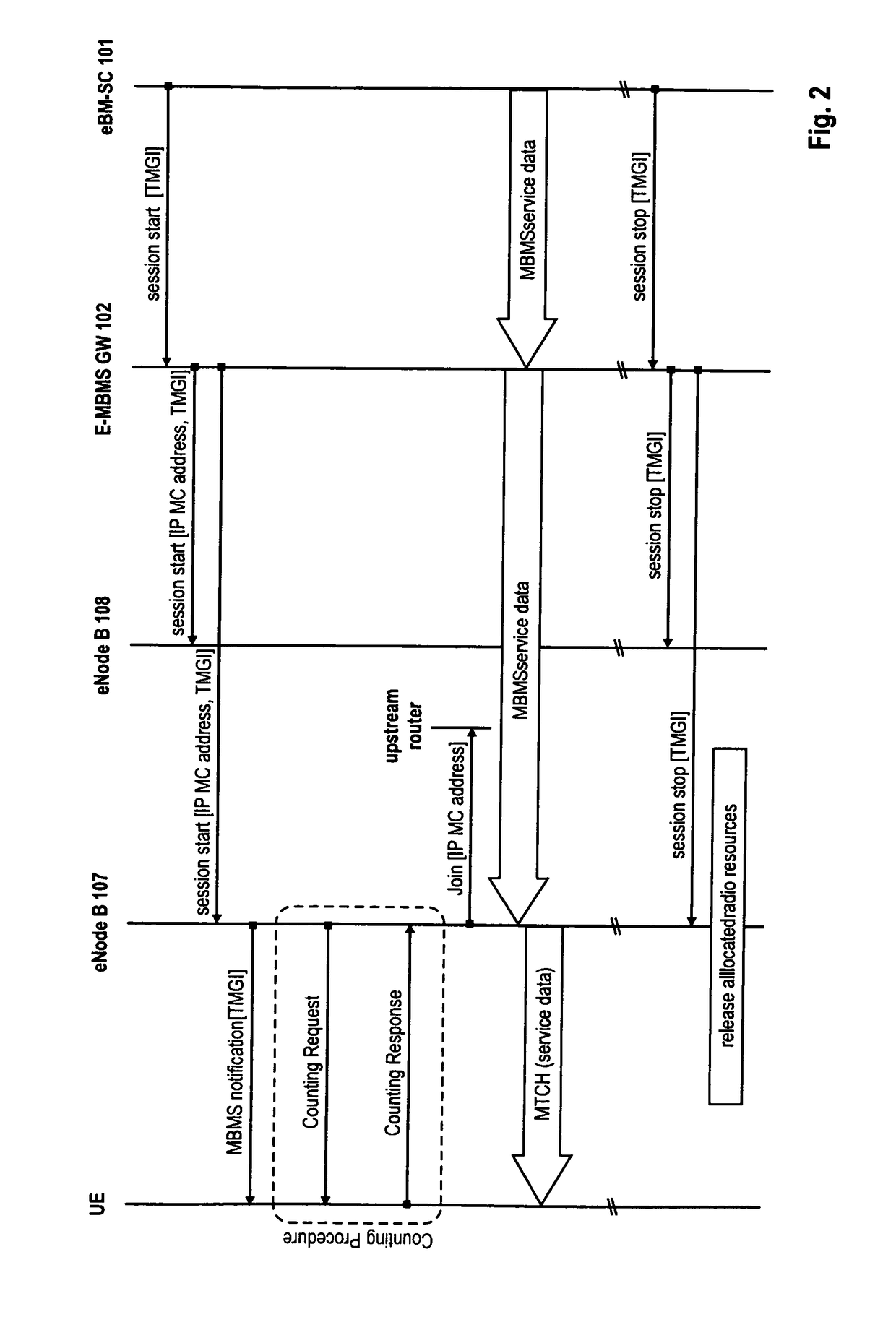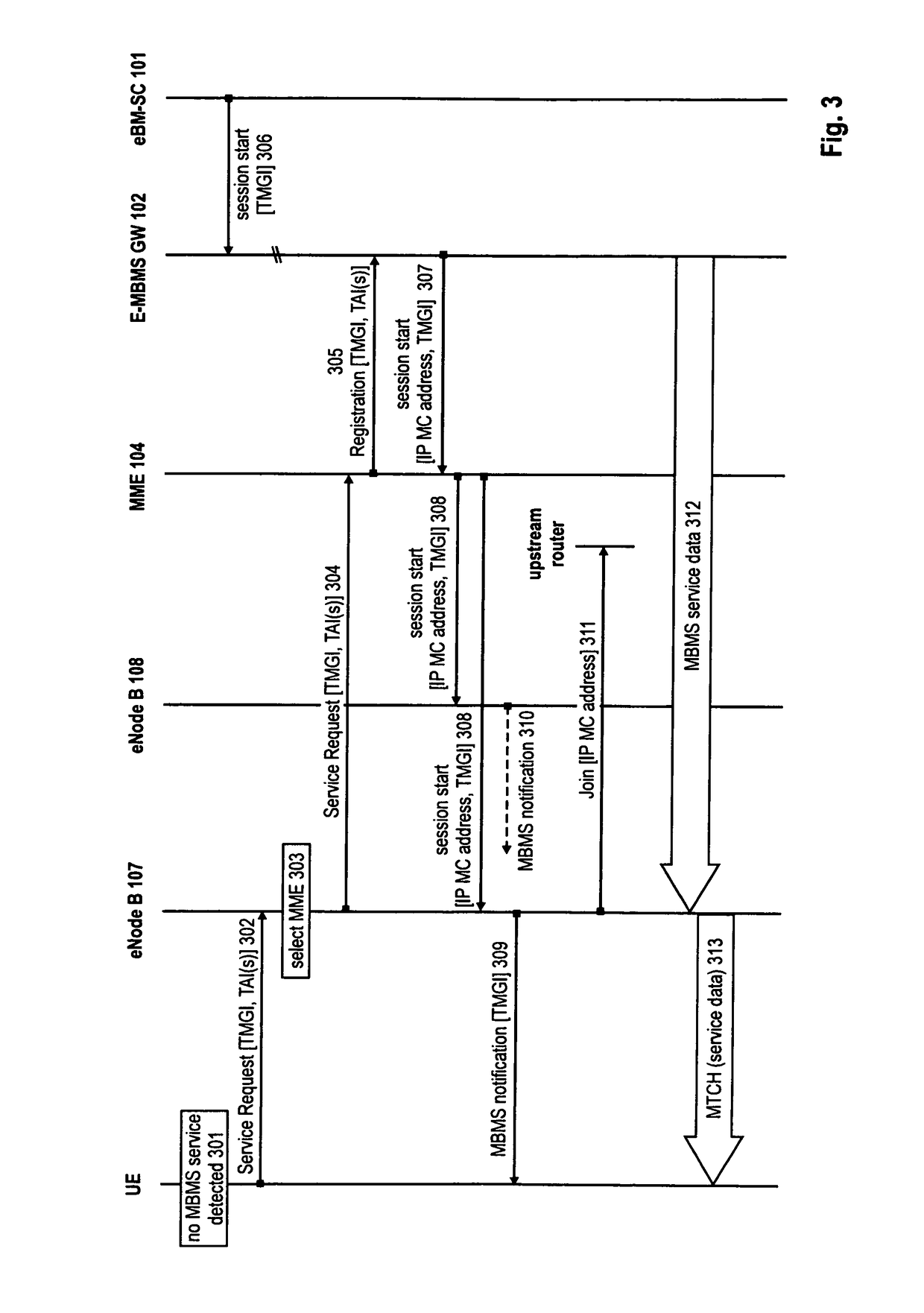Management of session control signaling for multicast/broadcast services
a multicast/broadcast and session control technology, applied in the direction of data switching networks, wireless commuication services, broadcast with distribution, etc., can solve the problems of unnecessary transmission of many session start messages, inflexible system, and considered rather stati
- Summary
- Abstract
- Description
- Claims
- Application Information
AI Technical Summary
Benefits of technology
Problems solved by technology
Method used
Image
Examples
Embodiment Construction
[0115]The following paragraphs will describe various embodiments of the invention. For exemplary purposes only, most of the embodiments are outlined in relation to an (evolved) UMTS communication system according to SAE / LTE discussed in the Technical Background section above. It should be noted that the invention may be advantageously used for example in connection with a mobile communication system such SAE / LTE communication system, but the invention is not limited to its use in this particular exemplary communication network.
[0116]The explanations given in the Technical Background section above are intended to better understand the mostly SAE / LTE specific exemplary embodiments described herein and should not be understood as limiting the invention to the described specific implementations of processes and functions in the mobile communication network. Nevertheless, it should be noted the improvements proposed herein may be readily applied in the architecture / system described in th...
PUM
 Login to view more
Login to view more Abstract
Description
Claims
Application Information
 Login to view more
Login to view more - R&D Engineer
- R&D Manager
- IP Professional
- Industry Leading Data Capabilities
- Powerful AI technology
- Patent DNA Extraction
Browse by: Latest US Patents, China's latest patents, Technical Efficacy Thesaurus, Application Domain, Technology Topic.
© 2024 PatSnap. All rights reserved.Legal|Privacy policy|Modern Slavery Act Transparency Statement|Sitemap



